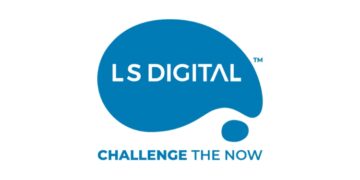Programmatic advertising truly stands as a game-changer in contemporary digital marketing. It leads to an automated process for decision-making in media buying. While theoretically, the promise of such technology-driven strategies is efficiency, accuracy, and greater engagement, how does it optimize ROI compared to the traditional one? Let’s find out.
Understanding Traditional Ad Buying
Traditional ad buying involves manual negotiations and pre-set pricing, which can be time-consuming and less flexible. This process typically includes direct dealings with salespeople, manual insertion orders, and bulk ad inventory purchases without the guarantee of reaching the right audience. The lack of targeting capabilities often results in wasted ad spend on uninterested viewers, making it difficult to track and measure the effectiveness of a campaign.
The Advent of Programmatic Advertising
In contrast, programmatic advertising involves the use of algorithms and data analytics to a more or less elaborate effect, thus automating the buying and placing of media inventory along with its optimization. It empowers advertisers to buy ad space in real time, targeting specific audiences demographically and also as per their behaviors, based on a pile of data on their activities online. This method not only increases precision but also heightens the relevance of the ad to potential customers, hence increasing the chances of conversion.
Enhanced Targeting and Personalization
This is one of the greatest benefits of programmatic advertising: it dissects mountains of data to target users in a much more specific and personal way. While traditional means are focused on broader targeting metrics, such as age and gender, programmatic technology can identify user behavior with the power of complex algorithms: browsing patterns, purchase history, and even device usage statistics, in order to let advertisers create just the right experience for ads.
Cost Efficiency Through Real-Time Bidding
RTB technology in programmatic advertising makes it possible for an advertiser to actually make a bid every time an ad impression is placed before a customer. The value of each impression is calculated on the spur of the moment, arising from the perceived worth of the impression to the advertiser. This is quite contrary to the fixed, flat-rate purchases in the sense that the cost of buying an impression is the same, regardless of the quality or relevance of the impression.
RTB can dramatically reduce costs: Advertisers pay only for impressions that have a high probability of being converted. Also, since bidding is done in milliseconds, a marketer is able to change campaign strategies in reaction to performance indexes and changing market conditions, making ad spending optimal through the lifecycle of a campaign.
Better ROI Through Better Business Intelligence Analytics and Reporting
Further in support: programmatic platforms can even enable robust analytics and real-time reporting features that traditionally have never been on offer through traditional ad-buying means. Advertisers are able to track a range of metrics from viewability and engagement rates to conversion rates and base strategies on the hard data.
It’s just data that, pieced together, makes it possible to optimize a campaign on an ongoing basis. This sort of responsiveness helps to hone marketing efforts and, in turn, boosts returns on investment by ensuring that the channels see a reduction of wasted ad spend and an increase in conversions.
Scaling and Integration
Programmatic advertising has made this whole scaling up of ad campaigns so easy, whereas the traditional methods have been quite laborious. Scaling up and scaling down in many markets or amongst different audience segments could be quite a daunting task with conventional methods. The ease of programmatic is its automation that makes scaling and handling different campaigns across different channels easier within large-scale operations.
It also increases coherence and strategic matching of the marketing effort because programmatic platforms can interface with other digital marketing tools and data systems, boosting consistency in using customer data to further detail targeting and personalization efforts.
Challenges and Considerations
As perfect as all this sounds, programmatic buying is not all about positives—it has a fair share of downsides. Issues such as ad fraud and privacy top the list of problems linked to this form of digital advertising. Advertisers must engage with only programmatic partners that boast a good brand reputation and use highly sophisticated tools that are directed toward the detection of fraud to protect these various investments made. Hosted data should always be handled ethically and in compliance with any other legal requirements.
Programmatic advertising truly stands as a game-changer in contemporary digital marketing. It leads to an automated process for decision-making in media buying. While theoretically, the promise of such technology-driven strategies is efficiency, accuracy, and greater engagement, how does it optimize ROI compared to the traditional one? Let’s find out.
Understanding Traditional Ad Buying
Traditional ad buying involves manual negotiations and pre-set pricing, which can be time-consuming and less flexible. This process typically includes direct dealings with salespeople, manual insertion orders, and bulk ad inventory purchases without the guarantee of reaching the right audience. The lack of targeting capabilities often results in wasted ad spend on uninterested viewers, making it difficult to track and measure the effectiveness of a campaign.
The Advent of Programmatic Advertising
In contrast, programmatic advertising involves the use of algorithms and data analytics to a more or less elaborate effect, thus automating the buying and placing of media inventory along with its optimization. It empowers advertisers to buy ad space in real time, targeting specific audiences demographically and also as per their behaviors, based on a pile of data on their activities online. This method not only increases precision but also heightens the relevance of the ad to potential customers, hence increasing the chances of conversion.
Enhanced Targeting and Personalization
This is one of the greatest benefits of programmatic advertising: it dissects mountains of data to target users in a much more specific and personal way. While traditional means are focused on broader targeting metrics, such as age and gender, programmatic technology can identify user behavior with the power of complex algorithms: browsing patterns, purchase history, and even device usage statistics, in order to let advertisers create just the right experience for ads.
Cost Efficiency Through Real-Time Bidding
RTB technology in programmatic advertising makes it possible for an advertiser to actually make a bid every time an ad impression is placed before a customer. The value of each impression is calculated on the spur of the moment, arising from the perceived worth of the impression to the advertiser. This is quite contrary to the fixed, flat-rate purchases in the sense that the cost of buying an impression is the same, regardless of the quality or relevance of the impression.
RTB can dramatically reduce costs: Advertisers pay only for impressions that have a high probability of being converted. Also, since bidding is done in milliseconds, a marketer is able to change campaign strategies in reaction to performance indexes and changing market conditions, making ad spending optimal through the lifecycle of a campaign.
Better ROI Through Better Business Intelligence Analytics and Reporting
Further in support: programmatic platforms can even enable robust analytics and real-time reporting features that traditionally have never been on offer through traditional ad-buying means. Advertisers are able to track a range of metrics from viewability and engagement rates to conversion rates and base strategies on the hard data.
It’s just data that, pieced together, makes it possible to optimize a campaign on an ongoing basis. This sort of responsiveness helps to hone marketing efforts and, in turn, boosts returns on investment by ensuring that the channels see a reduction of wasted ad spend and an increase in conversions.
Scaling and Integration
Programmatic advertising has made this whole scaling up of ad campaigns so easy, whereas the traditional methods have been quite laborious. Scaling up and scaling down in many markets or amongst different audience segments could be quite a daunting task with conventional methods. The ease of programmatic is its automation that makes scaling and handling different campaigns across different channels easier within large-scale operations.
It also increases coherence and strategic matching of the marketing effort because programmatic platforms can interface with other digital marketing tools and data systems, boosting consistency in using customer data to further detail targeting and personalization efforts.
Challenges and Considerations
As perfect as all this sounds, programmatic buying is not all about positives—it has a fair share of downsides. Issues such as ad fraud and privacy top the list of problems linked to this form of digital advertising. Advertisers must engage with only programmatic partners that boast a good brand reputation and use highly sophisticated tools that are directed toward the detection of fraud to protect these various investments made. Hosted data should always be handled ethically and in compliance with any other legal requirements.
Conclusion
There is no doubt that the transition from traditional buying to programmatic advertising is going to be a landmark move in digital advertising. Fundamentally, programmatic advertising, driven by real-time processing of data and technology, is capable of precision targeting. Nowadays, those businesses that would like to make the most of their ROI on advertising need to incorporate programmatic strategies in the face of the present-day and highly dynamic digital space. As we keep moving forward, so will the abilities in programmatic advertising become advanced—hence more opportunities and ways for marketers to be efficient and effective in doing campaigns outstandingly.
Authored by Siddhartha Vanvani, Founder & CEO of Digidarts
There is no doubt that the transition from traditional buying to programmatic advertising is going to be a landmark move in digital advertising. Fundamentally, programmatic advertising, driven by real-time processing of data and technology, is capable of precision targeting. Nowadays, those businesses that would like to make the most of their ROI on advertising need to incorporate programmatic strategies in the face of the present-day and highly dynamic digital space. As we keep moving forward, so will the abilities in programmatic advertising become advanced—hence more opportunities and ways for marketers to be efficient and effective in doing campaigns outstandingly.
Authored by Siddhartha Vanvani, Founder & CEO of Digidarts

















